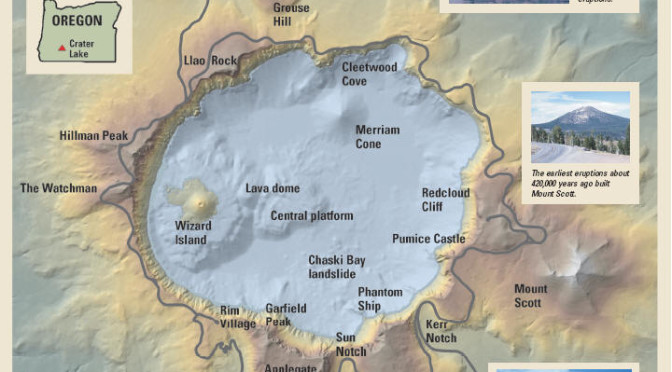The Future
The long history of volcanic activity at Crater Lake suggests strongly that this volcanic center will erupt again. The most recent eruptions occurred on the lake floor in the western part of the caldera. Future eruptions are more likely to occur in the same area than farther east. Interaction of magma and lake water at shallow levels (less than 100 feet or a few tens of meters) could generate explosions that throw large rocks and ash out beyond the caldera walls. The largest explosions could produce pyroclastic surges, hot, rapidly moving clouds of gas and ash, which could move out a few miles from vents along the margin of the lake. Eruptions in deeper water are less likely to be explosive or affect areas around the rim. An eruption similar to the one 7,700 years ago is unlikely because large volumes of magma are not available to cause such an eruption.
Landslides from the caldera walls can cause waves that flood shoreline areas, but one that could cause overtopping or failure of the caldera walls and catastrophic draining of Crater Lake is unlikely. At its lowest point, the caldera rim is more than 500 feet (165 m) above the lake level. Only major volcanic activity could cause the caldera walls to fail and result in flooding of lowland areas below Crater Lake.
Crater Lake lies within a region where the Earth’s crust is being gradually stretched. The faults that accommodate this extension could produce damaging earthquakes in Crater Lake National Park today. The West Klamath Lake fault zone consists of numerous faults, one of which passes 1/2 mile west of Rim Village. Although earthquakes as large as magnitude 7.0 are possible, scientists believe that they occur only about once every 3,000 to 10,000 years. Such earthquakes could cause landslides large enough to generate dangerous waves on Crater Lake. Smaller earthquakes are much more likely, but they are unlikely to trigger large landslides.
Other pages in this section
*** previous title *** --- *** next title ***


